 |
 |
 |
| |
8+ Year Pooled Analysis: Adherence and HIV
Incidence in >6000 Women on F/TDF for PrEP - adherence matters
|
| |
| |
CROI 2023 Feb 20-23
Jeanne Marrazzo,1 Marissa Becker,2 Linda-Gail Bekker,3 Connie Celum,4
Michael Kiragu,5 Ashley A. Leech,6 Allan Taylor,7 Faith Ussery,7 Juan Yang,8
Melanie de Boer,8 Christoph Carter,8 Moupali Das,8 Jared Baeten,8 Li Tao8
1University of Alabama at Birmingham School of Medicine, Birmingham, AL, USA; 2University of Manitoba, Winnipeg, Manitoba, Canada; 3The Desmond Tutu HIV Centre, Cape Town, South Africa; 4University of Washington, Seattle, WA, USA;
5LVCT Health, Nairobi, Kenya; 6Vanderbilt University School of Medicine, Nashville, TN, USA;
7Centers for Disease Control and Prevention, Atlanta, GA, USA; 8Gilead Sciences, Inc., Foster City, CA, USA
Presenting author disclosure: Merck (consulting or advisor fee)
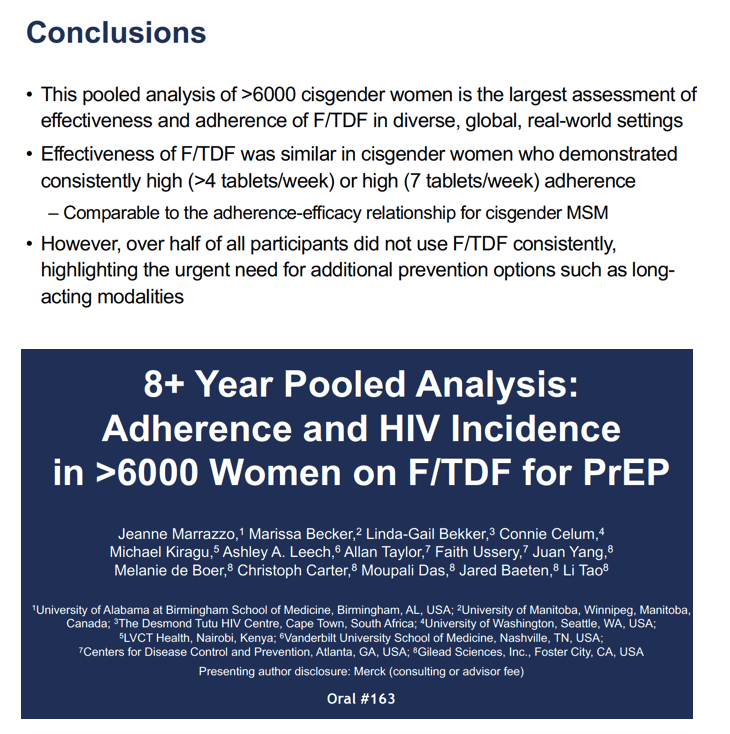
program abstract
Background: Daily emtricitabine/tenofovir disoproxil fumarate (F/TDF) for HIV pre-exposure prophylaxis (PrEP) substantially reduces HIV acquisition. This multinational pooled analysis summarizes data from >6000 women followed since F/TDF for PrEP approval in 2012 to better understand adherence and HIV prevention.
Methods: We obtained demographic, adherence, and HIV-1 status for cisgender women on F/TDF for PrEP at baseline and follow-up visits of 11 demonstration projects in 6 countries from 11/2012 to 12/2020. We evaluated adherence using long- or short-term measures of tenofovir-diphosphate
(TFV-DP) in dried blood spots or TFV in plasma, respectively, and by electronic pill cap-monitoring, pill-counts, self-report, and/or study-reported adherence scale. We used group-based trajectory modelling to identify adherence trajectories over 96 weeks and assigned women into 4 latent adherence groups (Table). We used multinomial logistic regression adjusted for study clustering to estimate odds ratios (OR) of adherence, and Poisson regression to calculate HIV incidence rates (IR) per 100 person-years (PY).
Results: Among 6296 women, median age at PrEP initiation was 23 y (IQR 20-29, range 10-69) with mean 0.7 y (range 0.01-1.89) of follow-up. 78% were from Africa and 21% from Asia. 32 women acquired HIV, with overall
IR of 0.72/100 PY (95% CI 0.51-1.01). Age was inversely associated with HIV incidence. Numerically higher HIV IR occurred in women who were married or had no children. Marital/parity status and HIV incidence associations were attenuated after adjusting for age, but for married or nulliparous women remained higher than for unmarried women or those with children.
Of 2954 women with adherence data, 17% were highly adherent, 22% consistently moderate, 39% moderate and declining, and 21% consistently low adherence. Women >25 y were more likely to remain highly adherent than those <18 (OR=2.28, 95% CI 1.35-3.85). No new HIV infections were observed in women with high, steady adherence. HIV IRs (95% CI) were 0.13 (0.02-0.92), 0.49 (0.22-1.1), and 1.27 (0.53-3.04) with consistently moderate, moderate and declining, and consistently low adherence, respectively.
Conclusion: This diverse multinational pooled analysis of F/TDF for PrEP is the largest assessment of real-world adherence to PrEP and HIV incidence in cisgender women and supports the high effectiveness of F/TDF for PrEP in women with consistent adherence. Efforts to support real-world adherence are critical to maximizing PrEP efficacy in women.
Incidence Rates (95% Confidence Intervals) of New HIV-1 Diagnosis for Women Used F/TDF for PrEP*
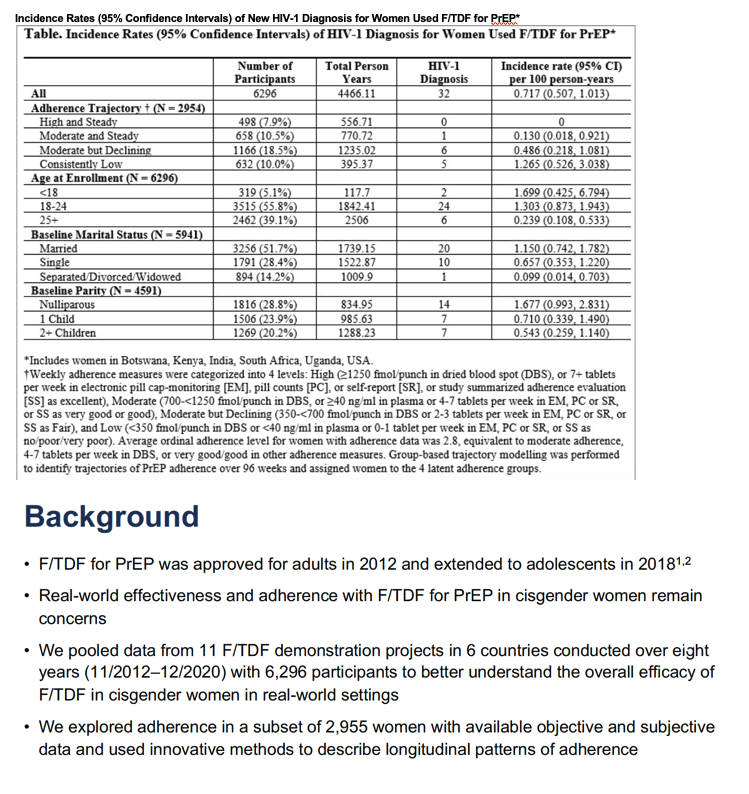
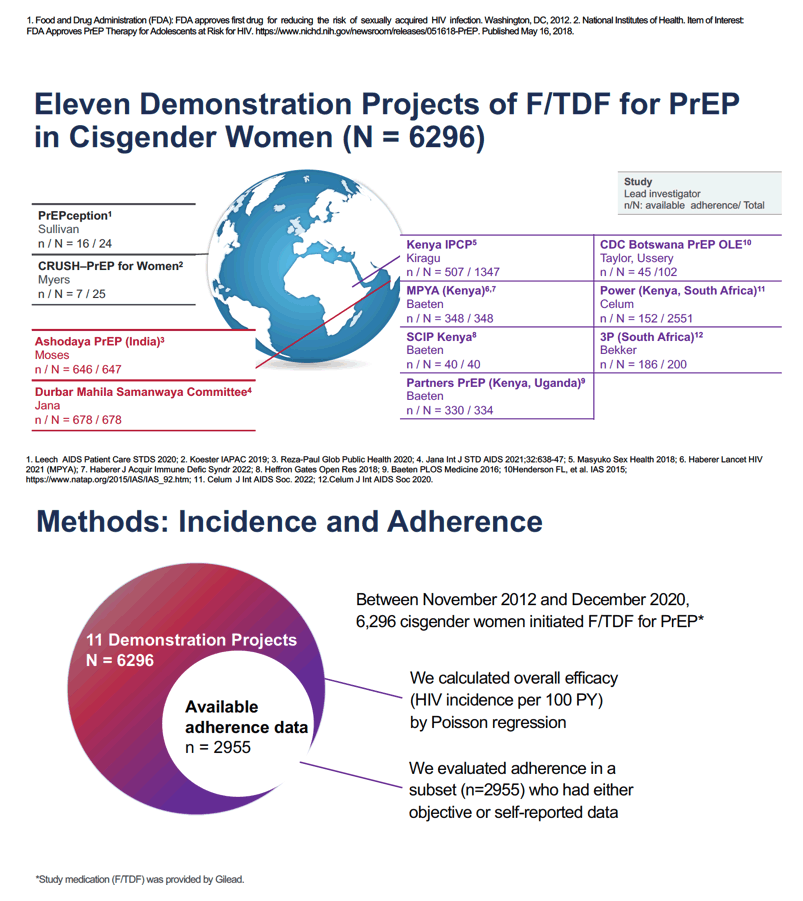
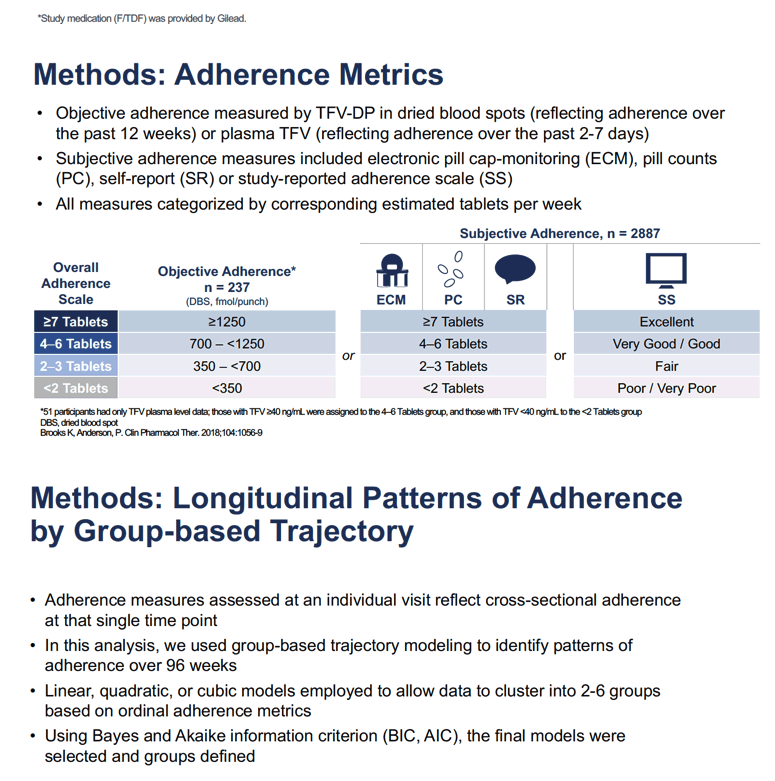
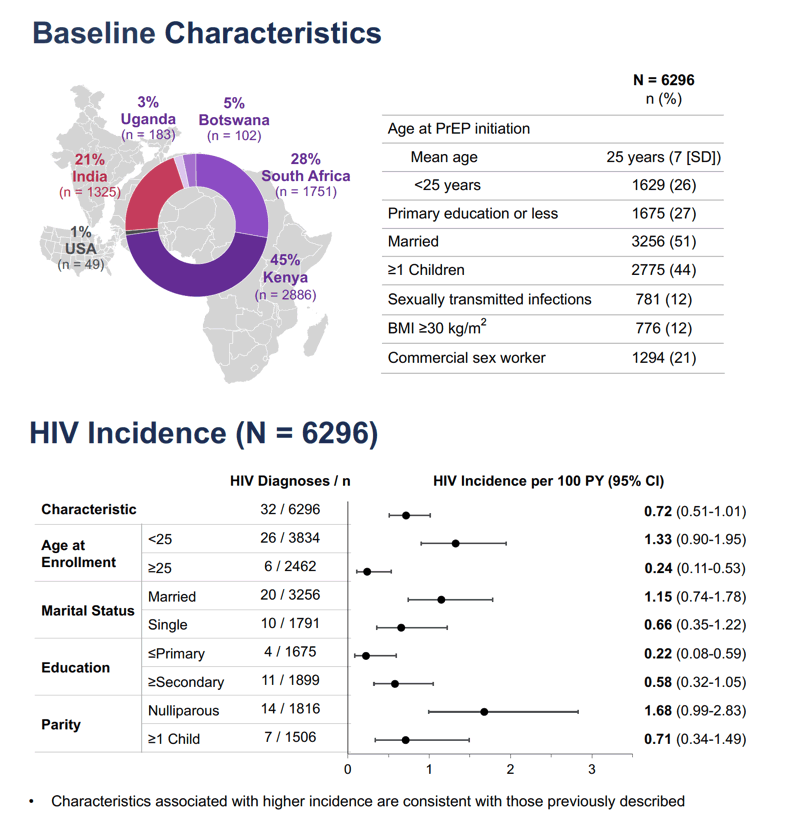
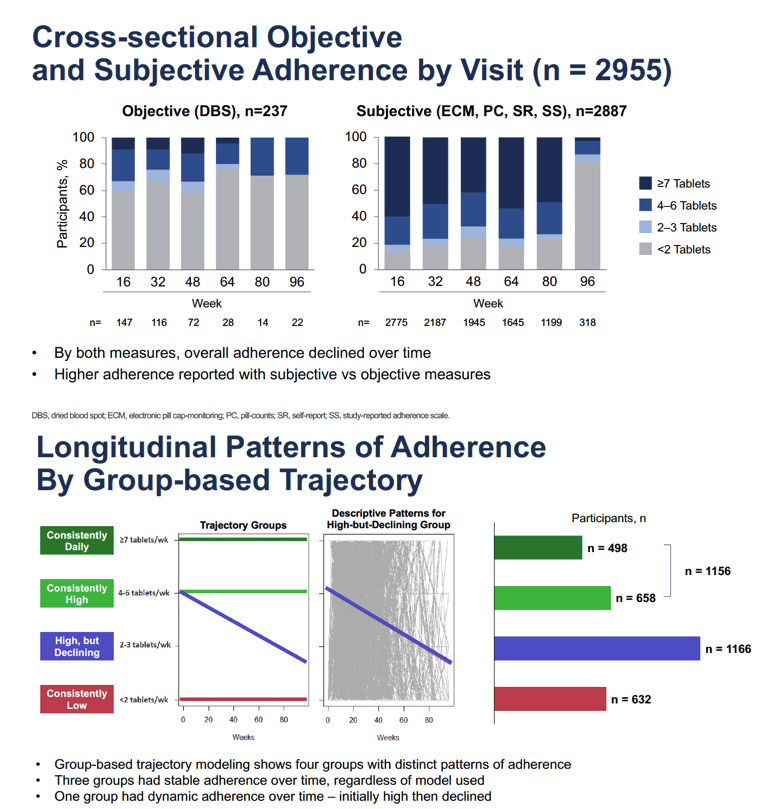
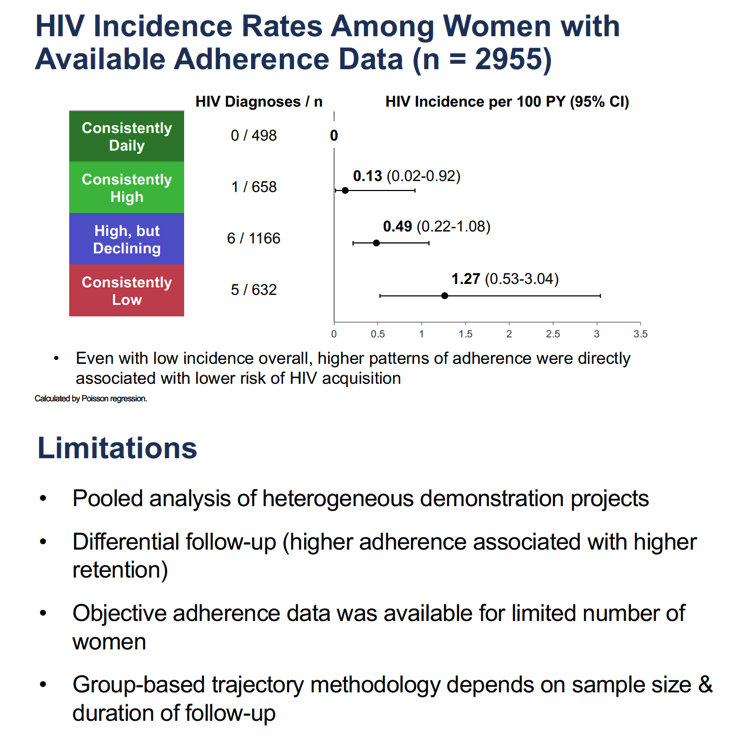
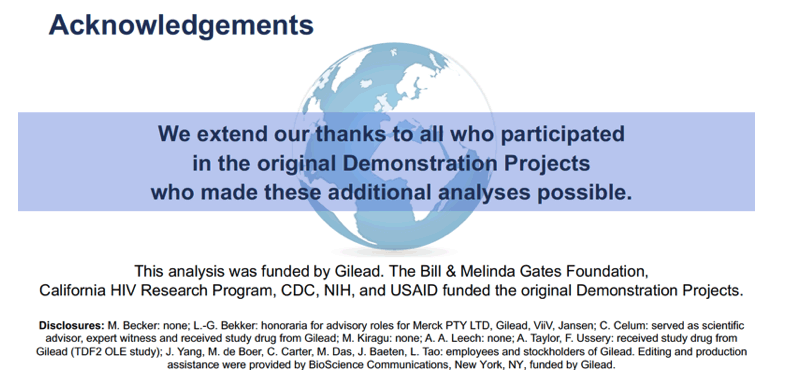
|
| |
|
 |
 |
|
|